Cars and freeways are about as ingrained in Los Angeles culture as celebrities and beaches. But I’m here to tell you – as someone who not only lives in LA and takes a public bus or train almost daily but who also has worked in the public transit industry for two decades – that public transportation here is surprisingly abundant, especially given how large and spread out LA is. Sure, the system has its challenges, but it’s far more extensive than I expected, and in my opinion, is poised for a moment in the warm Southern California sun.
My hope is that the following overview of public transit in LA will encourage you to give it a try, whether you’re planning a visit or call the city home. Trust me, driving in LA is one of the quickest ways to burn out on this city, and I do everything in my power to avoid it. With a little research and patience, you’ll find there are many ways to enjoy a car-free stay in and around this sprawling metropolis.
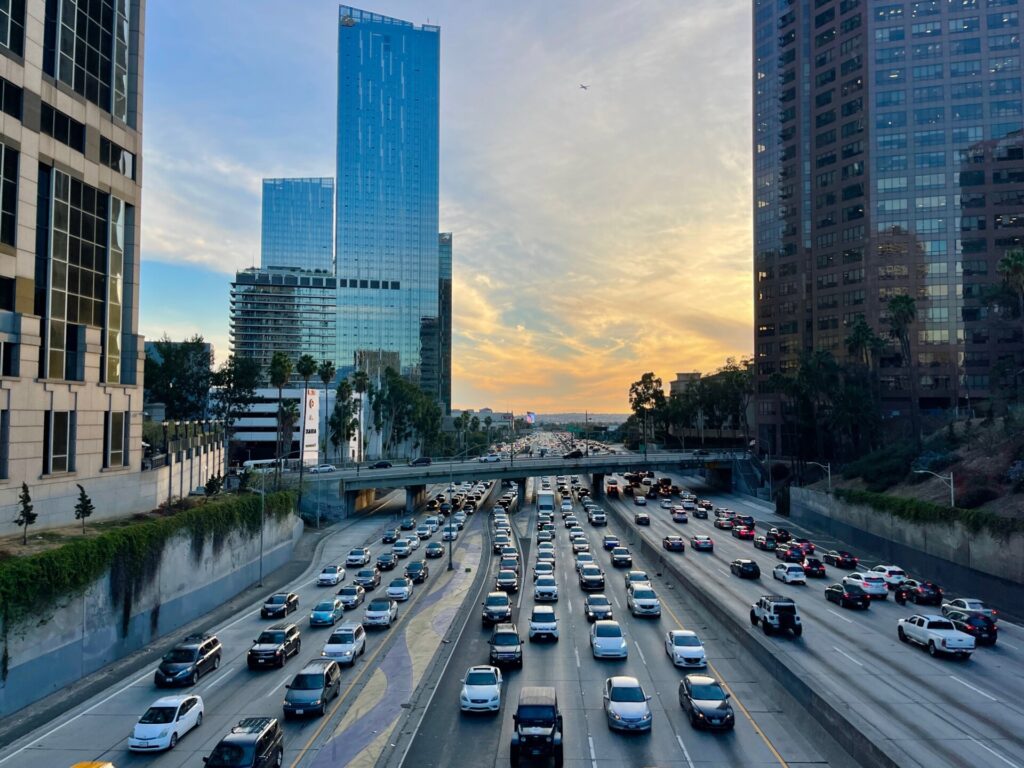
Subway and Light Rail
To start, let’s clear up some common misconceptions. LA not only has a subway and light rail system, but it’s one of the biggest in the United States. Opened in 1995 and managed by Metro, it includes two subway and four light rail lines, along with a massive network of buses that reach into virtually every nook and cranny of LA County.
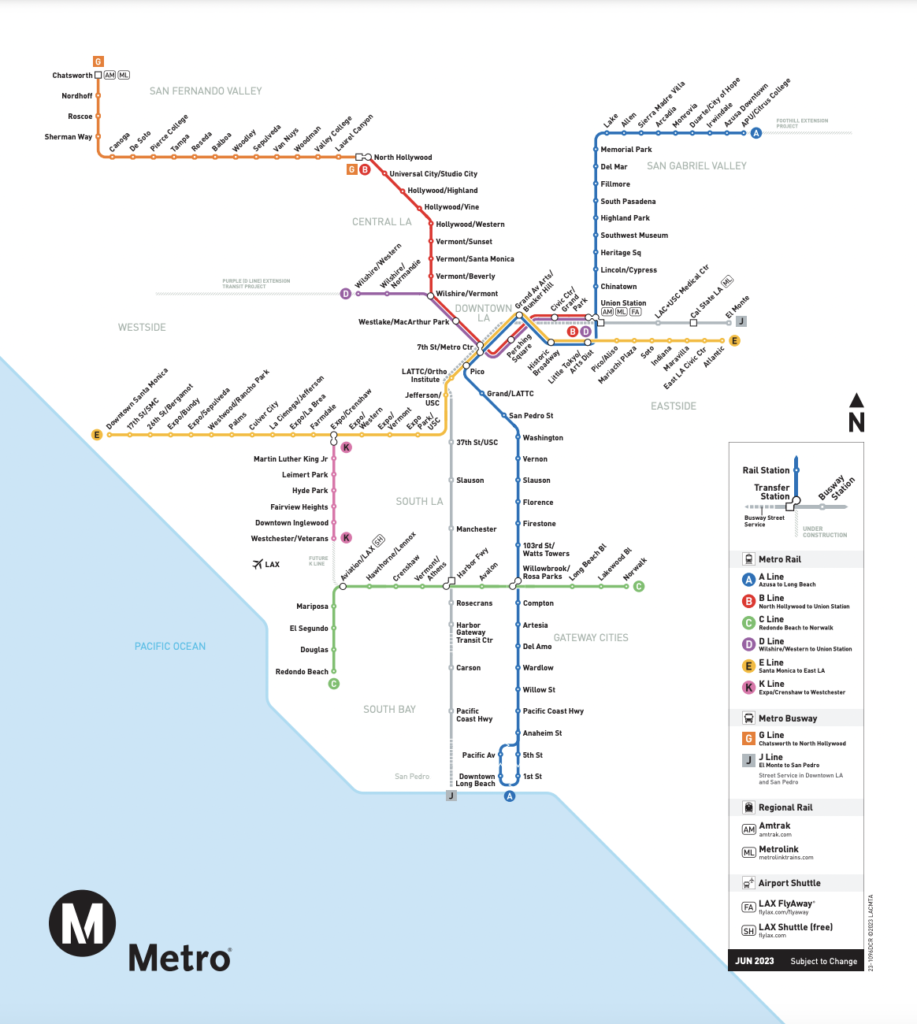
LA’s subway and light rail system is admittedly not perfect. Unlike cities on the east coast and throughout Europe, there simply isn’t the same culture of taking transit here, and there’s a large swath of Angelenos who never use the system. I’ve even run into people who didn’t know the city has a subway!
There’s also the current state of the system. The homeless and mental health crisis in Los Angeles is the city’s greatest challenge and is particularly visible on Metro’s two subway lines. To be fair, all major cities are experiencing this to some extent, and that has been exacerbated by the pandemic.
Still, I am a big fan of Metro, which conveniently gets me to work every day and continues to expand and improve as the city prepares to welcome the world to the 2028 Olympic and Paralympic Games. This includes game-changing service to Los Angeles International Airport (LAX) arriving in 2024 and the much-anticipated and needed D Line (Purple) extension along Wilshire Blvd. into Beverly Hills, Century City and Westwood, which are all major job centers and tourist destinations.
But enough about the potential. LA’s subway and light rail system as it stands today has a lot to offer, especially if you base yourself downtown, where you’ll find plentiful transit connections at LA’s historic Union Station and the 7th St./Metro Center.
The E Line (Expo), which is mostly above ground, provides an easy, traffic-free way to get to Santa Monica, for example. You can hop on at the 7th St./Metro Center and in an hour be at the Santa Monica Pier. If that sounds like a long time, you haven’t driven in LA!
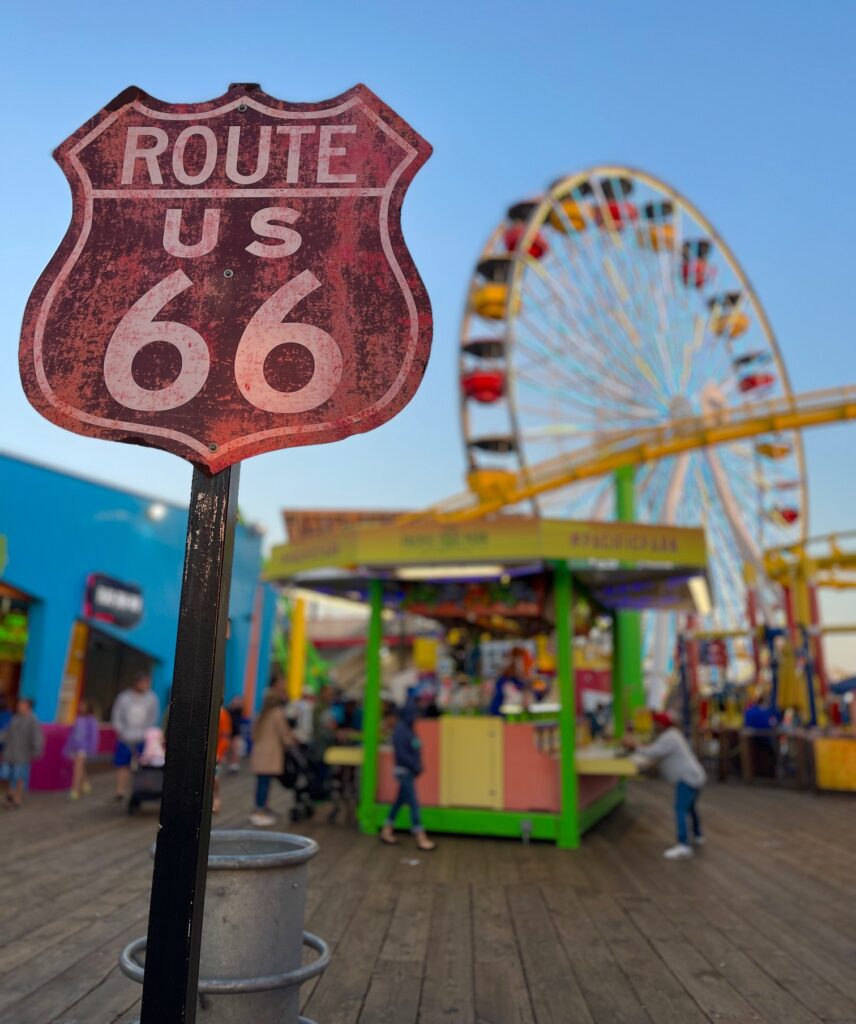
Santa Monica isn’t the only destination along the Expo Line. In half an hour you can travel from Downtown LA to Culver City, which has its own wonderful downtown filled with restaurants and shops.
You can also get off at the Exposition Park/USC station and visit the California Science Center, Natural History Museum, the California African American Museum, Memorial Stadium, and the Exposition Park Rose Garden – all without a car!
Metro’s first subway line, the B Line (Red), runs between Downtown Los Angeles and North Hollywood. Landmark stops include Grand Central Market, LA Convention Center, MacArthur Park, the Pantages Theater, the Walk of Fame and Universal Studios.
Other popular destinations within and outside of LA include Long Beach, which is at the end of the A Line (Blue), as well as Downtown LA’s Mariachi Plaza and the city of Pasadena, both on the L Line (Gold).
LA Metro’s latest offering is the K Line which opened in October 2022. By 2024 it will serve the new LAX/Metro Transit Center Station, where the line will link up with a new Automated People Mover to (finally!) provide a way for travelers to get in and out of the airport.
Speaking of LAX
The lack of public transit access at one of the country’s top five busiest airports has been a confounding and glaring gap in LA’s transportation landscape. The excitement around and need for the new transit center cannot be overstated.
Until then . . .
If you don’t want to rent a car and you’re wondering what to do, the FlyAway Bus is your best option. Departing from the lower arrival level in front of each terminal (look for the blue FlyAway column), they have regularly scheduled trips seven days a week between each terminal and locations in Van Nuys and at LA Union Station in Downtown LA. The nice part about going to Union Station is that from there, you have a lot of subway, bus and rail options.
You can buy a ticket for the FlyAway bus by contactless credit/debit transaction, online, or at the Van Nuys Terminal and Union Station ticket booths. A regular one-way fare is $9.75 at the time of this writing, and you can pay with a TAP card.
LAX also has a free shuttle service between every terminal and the LAX City Bus Center, where you can connect to a number of bus systems (more on buses later), as well as Metro’s C Line (Green) Aviation station.
Read more about transportation to and from LAX here.
Paying for Public Transit with a TAP Card
Before I continue, I need to mention that the best way to pay most rail and bus fares is with a TAP card. Available at hundreds of vendor locations, as well as ticket vending machines throughout LA County for a small one-time fee, these reusable cards are accepted on multiple participating transit systems throughout the greater LA area.
You simply load the card with either an agency-specific pass or a pre-set dollar amount, called stored value. Tap each time you board a bus or train, and the correct fare will be deducted, including any applicable transfer discounts.
If you intend to travel across multiple transit providers, be sure to load stored value, as you cannot use an agency-specific pass to ride another transit agency vehicle even though the pass is on a TAP card.
For those who use multiple transit providers on a frequent basis, there’s the regional monthly EZ Pass. This pass must be loaded on a TAP card and is good for travel on approximately two dozen local transit operators. Metro has good information about the EZ Pass on its website, including participating agencies and where to purchase.
Buses
In my opinion, Los Angeles’ vast network of buses – mostly managed by Metro but also by other local transit systems – is LA County’s greatest public transit strength. Let’s start with Metro buses because their network, comprised of more than 165 routes, is the most extensive by far and is the region’s true transportation workhorse.
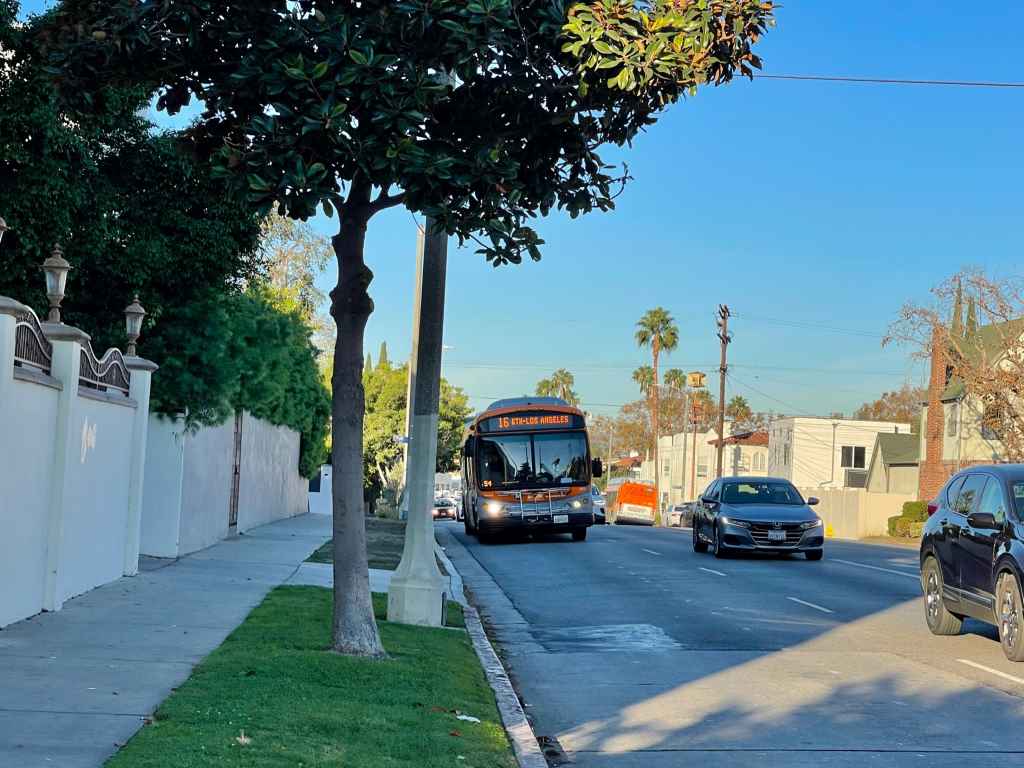
There are four categories of bus service offered by Metro throughout LA County:
- Local buses stop around every two blocks and are painted orange.
- Rapid buses are faster buses with fewer stops only at major intersections and are painted red.
- Express buses travel on routes on freeways for longer distances with fewer stops and has a higher premium.
- Bus Rapid Transit (BRT) G Line (Orange) and J Line (Silver) run on dedicated bus lanes and require payment with a TAP card.
As I spend more time in LA, I am continually amazed by the sheer number of buses that ply the streets and how frequently they run, often every few minutes. Sure, they are at the mercy of traffic just like cars, but at least someone else is doing the driving and you don’t have to pay exorbitant California gas prices. Furthermore, along many main corridors, there are express buses that make fewer stops.
For example, you can take Rapid Bus 720 all the way down Wilshire Blvd. from Downtown LA to Santa Monica. Along the way is Museum Row, including the Los Angeles County Museum of Art, La Brea Tar Pits and Museum, and the Academy Museum of Motion Pictures – all within steps of a bus stop.
My local bus, the 16, travels along 3rd St. between Downtown LA and West Hollywood. Some of the best shopping and restaurants in LA are along this corridor, including Koreatown, the Grove and the Original Farmer’s Market, and Beverly Center.
You get the picture.
Other City Buses
Many of LA’s surrounding cities are served by their own bus systems in addition to LA Metro. Here are a few:
- Big Blue Bus provides service in the City of Santa Monica as well as the west side of LA including Westwood, UCLA and the LAX area. Many routes connect with Metro’s E Line (Expo), and there’s a single express route that travels to and from Downtown LA.
- Culver CityBus operates seven routes throughout the Westside communities of Venice, Westchester, Westwood, West Los Angeles, Palms, Playa Vista, Marina Del Rey, Rancho Park, Mar Vista, Century City, and Culver City. In addition to carrying riders to and from Downtown LA, Culver CityBus Line 6 and Rapid 6 offer an easy and inexpensive way to LAX. Both drop off at the LAX City Bus Center where you can take the free shuttle to your terminal.
- Foothill Transit serves the San Gabriel and Pomona valleys, including a service between Downtown LA and the city of El Monte that combines its Silver Streak bus with Metro’s J Line (Silver) bus route.
- DASH provides frequent, shuttle-like service within smaller areas of downtown Los Angeles and in 27 neighborhoods across the city for just 50 cents a ride. Run by LA Department of Transportation (LADOT), each route is designed to serve travel within that neighborhood and connect to other transit services such as Metro.
- Beach Cities Transit (BCT) serves the popular beach communities Redondo Beach, Hermosa Beach, Manhattan Beach, and El Segundo. All of these towns are close to LAX, and BCT’s Line 109 connects with Metro’s C Line (Green) Aviation/LAX station and the LAX City Bus Center.
NOTE: All of these buses have fare structures separate from Metro; however, if you have a TAP card with cash value stored on it, you can use it to pay on multiple systems. You can also take advantage of discounts when transferring from one operator to another.
Metro Micro
A challenge with taking public transportation sometimes is that your transit stop or station may not be within easy walking distance of your destination. For that, there’s Metro Micro. Run by Metro, it’s a service that involves using an app, Metro Micro, (or calling 323-GO-METRO) to hail a shared ride in a van as long as you’re within one of its operating zones. No matter how far you go within that zone, the cost is only $1 at the time of this writing and includes a bus or rail transfer.
Regional Passenger Rail
Like public transit in and around LA, regional passenger rail across the wider Southern California region is more robust than you might expect. It’s not quite Europe, but you can still get around nicely, especially with the many connections to local transit.
LA’s Union Station is a hub for two major rail services – Metrolink and Amtrak.
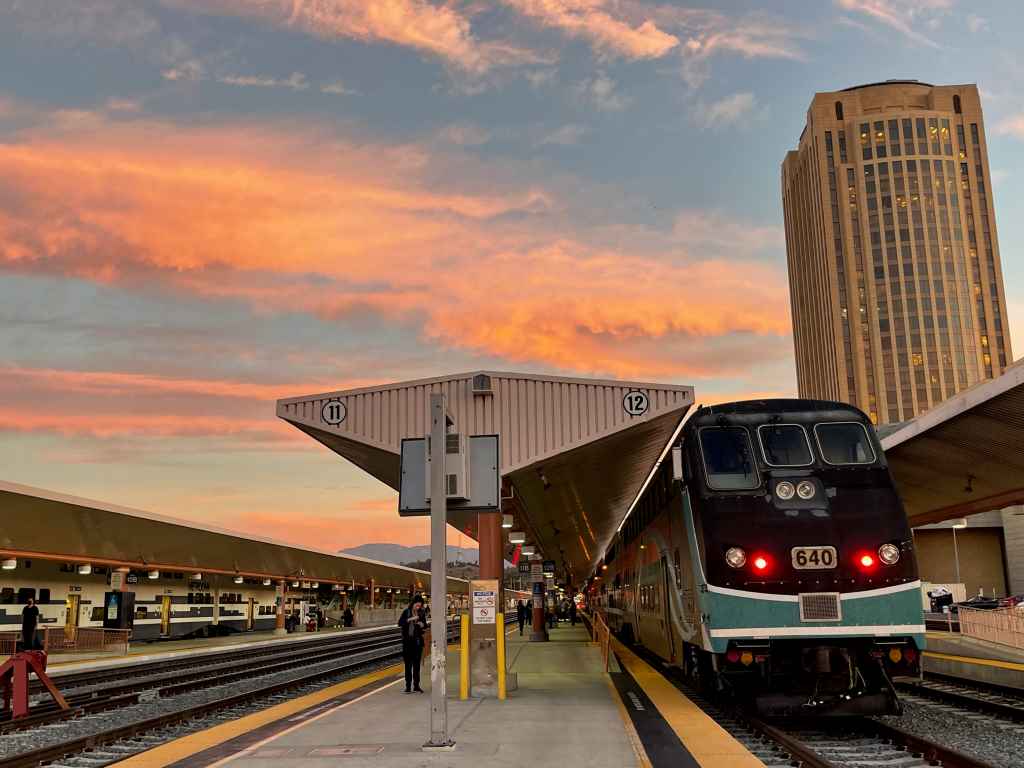
Let’s start with Metrolink. This system has seven lines providing service in six counties – Los Angeles, Ventura, San Bernardino, Riverside, Orange, and as far south as Oceanside in San Diego County. At the Oceanside Transit Center, Metrolink connects with the North County Transit District’s Coaster and Sprinter trains, as well as the Amtrak Pacific Surfliner.
Amtrak has both state and long-distance trains that stop at LA Union Station. The Pacific Surfliner is a gorgeous, mostly coastal route that travels between San Diego and San Luis Obispo, sharing some of the same stations as Metrolink in Orange and Ventura counties. North of Ventura, trains stop in the popular town of Santa Barbara (right downtown within walking distance of hotels, shops, restaurants and the beach, I might add!) and other smaller beach communities before reaching San Luis Obispo.
Also serving Los Angeles are three long-distance Amtrak trains. Making one daily round trip is the Coast Starlight between LA and Seattle and the Southwest Chief between LA and Chicago. The Sunset Limited makes three round trips each week between LA and New Orleans. All these trains take a long time by modern rail standards but offer a unique and relaxing way to experience the beauty of California and the United States.
You can read more about all of Amtrak’s routes in California here.
